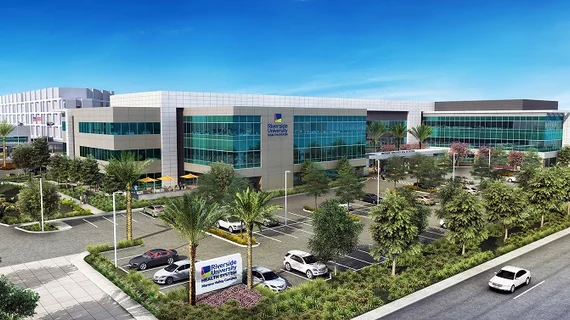Expanding Enterprise Imaging to Cardiology: From Where Radiology Sits, Riverside’s Move Into Cardiac Care Is Picture Perfect
Last February, 439-bed Riverside University Health System Medical Center (RUHS-MC) opened a new cardiac and neurovascular catheterization lab. While some internal questioning initially swirled around which vendor would supply image-management products and services, the CIO-led selection and acquisition team quickly settled on Sectra’s Enterprise Imaging for Cardiology solution.
This only made sense, given the company’s history with Riverside: In 1998 Riverside became Sweden-based Sectra’s first customer in the U.S.
ImagingBiz recently sat down Gail Miller and Alison Cortese, both RUHS-MC PACS administrators, to talk about the 126-year-old institution’s expansion into heart care and what it means to their department, radiology—which has seen its annual procedure count top 150,000 studies per year and keep on rising.
Where is your growth coming from?
Gail Miller: I think it’s mainly that more people are moving to Riverside County. There are almost two and a half million people just in Riverside County now. Not only is the area becoming more populous, but we also began to share an Epic [EMR] instance with another teaching hospital in the area through Community Connect to integrate patient information from multiple sources with one of the benefits of improving the patient experience.
What prompted RUHS-MC to open a cardiac and neurovascular cath lab?
Miller: One of the many drivers is our focus to get a level 1 trauma center designation. Plus we’ve been having to send all our patients out for cath lab procedures, and physicians and administration want to have the capability to do everything here.
So the move has spurred you to expand your enterprise imaging from radiology to cardiology. Are any other -ologies involved?
Miller: In the spring we’re going to be opening a 200,000-square-foot Medical and Surgical Center that will have medical office and outpatient surgery space on this same campus as the hospital building.
You were the first Sectra PACS installation in the U.S. in 1998. Across all these years since, you’ve stuck with Sectra. Why?
Miller: We’ve just been really happy with the product. There was a brief moment where there was a chance of us switching. When we were going with the Epic instance, they were talking about possibly switching. But we’ve always had great customer service from Sectra, and we’re just really comfortable with their products and their people.
A comfort factor was there.
Alison Cortese: Yes. It’s very easy to use. I just started working with Gail as a PACS admin within the last two years. Going from technologist to a PACS admin in training, I’ve found the people amazing. The Sectra help desk and support people—if I ever have an issue, I can’t say enough about the support that Sectra provides. It’s made my transition easier knowing that I have Sectra’s support along with Gail’s support. She’s my No. 1, but when she’s not there and I have an issue, I know that Sectra is always there and willing to help.
Did the move into cardiology bring about any changes or raise any issues that others considering a similar move might want to know about?
Miller: We really have good support and good teams within our system. We know who to go to in each part of IT. We have those go-to people, just like we’re the go-to people for other members of our teams. We all really work well together.
That must have helped in the cath lab project when it came to ironing out technical issues as a team.
Miller: Yes, and the fact that TomTec (for automated echocardiogram measurements), Ascend (for structured reporting) and Epic EHR work so closely with Sectra has made a lot of things really easy. The transition was easy, and working with them as a close-knit group has been very good for us. We haven’t had any issues.
If we didn’t have really good teamwork, this project could have been difficult. Leadership could have said, “Look, this is our deadline. Do whatever you have to do and just hit it.” Instead, we all kind of sat back and said, “You know, what we’ll gain by pushing the deadline back is worth the time, the extra money, the extra man hours it’s going to take to make it right.” We don’t want to complete a project just to have completed a project. We want to make sure we get it right.
What kind of feedback on your PACS administration have you received from physicians?
The chief of cardiology at RUHS-MC, Dr. Rajogopal Krishnan, has been especially helpful. We’ve got really nice doctors. Even our radiology group is wonderful. They give us feedback, and we give that to Sectra. They really listen to that input, and some of the requests and changes we’ve suggested have come to fruition. It’s great seeing that happen.
What should hospitals demand of their vendors?
Miller: Good customer service. Not all vendors have it, and you’re well within your rights to ask for it when vendors aren’t providing it. Sectra has it, and I can give you an example.
One time prior to our current technical infrastructure, we had some difficulties with a data server. Sectra went above and beyond to assist us in our time of need. That was a huge thing for us. It was customer service beyond what you would expect or even think to ask for. Sectra stepped in—all to help us, the customer.
What else can you tell me about transitioning into cardiology that we haven’t hit on?
Cortese: Just that cardiology long term will see so much improvement. This will standardize the whole imaging process, regardless of where the image interpretation is done.

